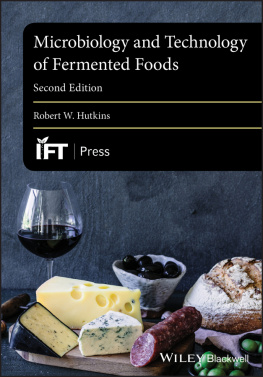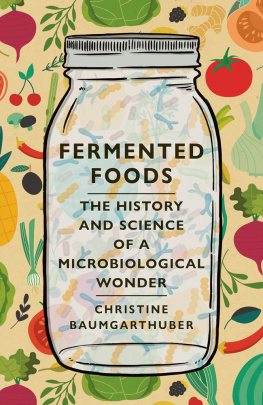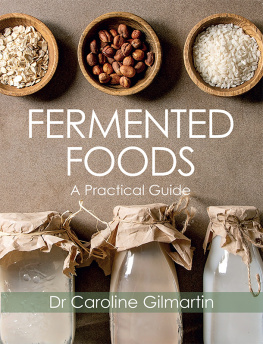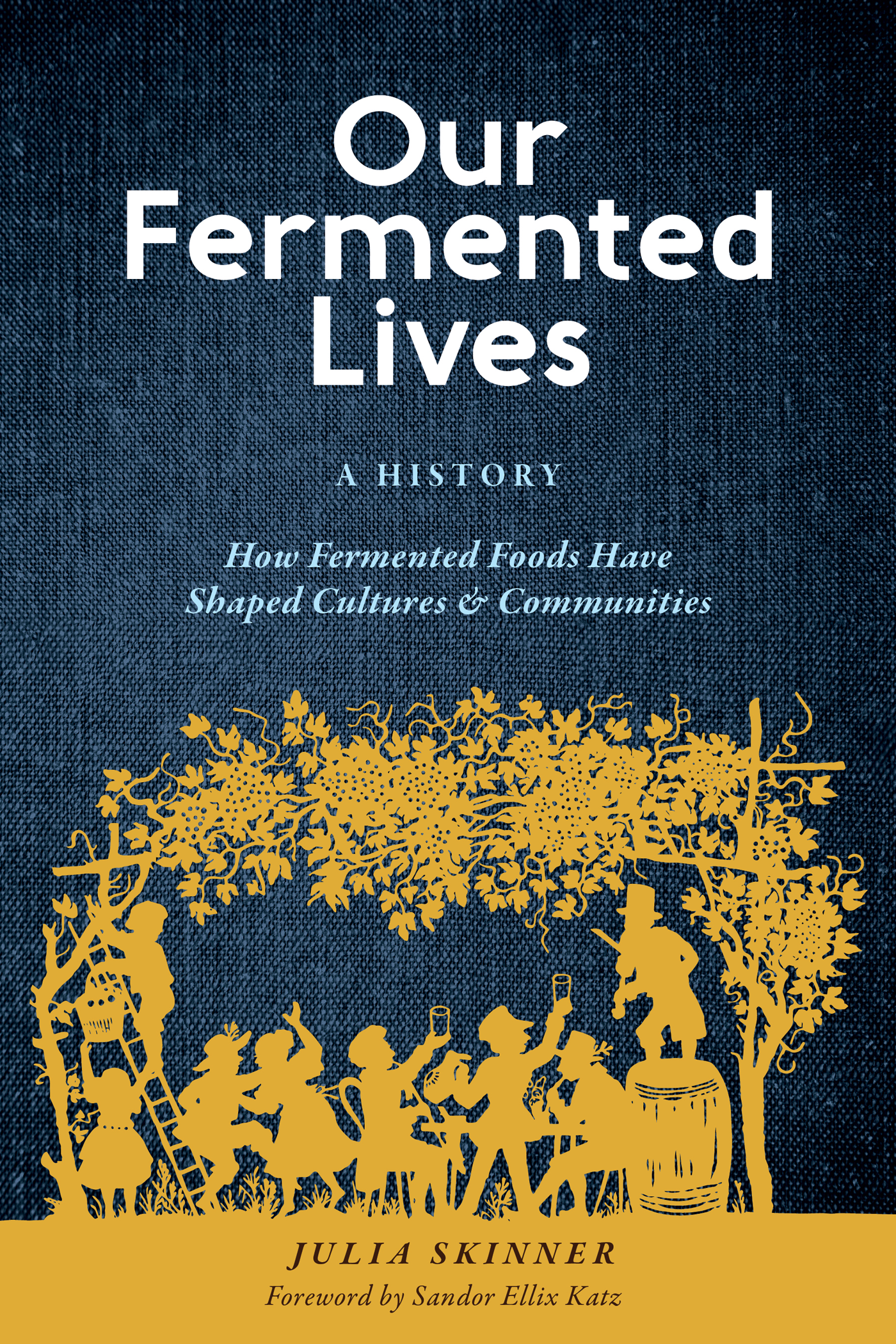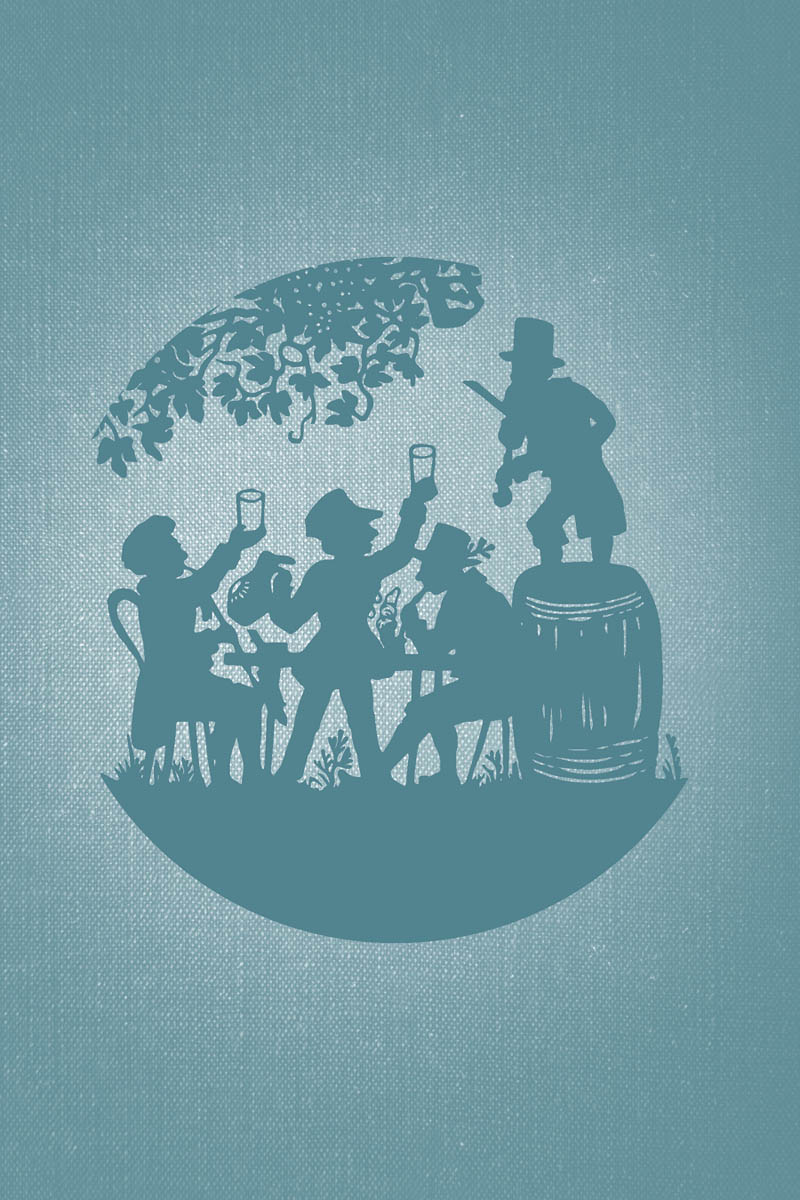Praise for Our Fermented Lives
This book shows us how countless generations before us have made meaning with their food, and how we can continue that tradition and make new meanings, stories, and traditions of our own.
from the foreword by Sandor Ellix Katz, New York Times
best-selling author of The Art of Fermentation
Julias deep knowledge and reverence for the craft of preserving food makes my life as a forever student all the more joyful.
Cortney Burns, chef and author of Nourish Me Home
The recipes are fabulous, and by setting microbes in their historical and social contexts, Skinner makes this book a unique addition to the literature on fermentation.
Ken Albala, professor of history, University of the Pacific
Skinner weaves together ancient history with modern conversations about food security, inequality, and appropriation. In doing so, she has created a rich tapestry that illuminates fermentations place in the human experienceone that encompasses food preservation, flavor, health, and the intersection of human and microbial cultures.
Kirsten K. Shockey, coauthor of Fermented Vegetables and
cofounder of The Fermentation School
Skinner has brilliantly combined practical, hands-on knowledge with historical context and anthropological themes for this treasure trove!
Jenny Dorsey, chef, writer, and founder of Studio ATAO
The mission of Storey Publishing is to serve our customers by publishing practical information that encourages personal independence in harmony with the environment.
Edited by Sarah Guare Slattery and Carleen Madigan
Art direction by Ash Austin
Book design by Stacy Wakefield Forte
Indexed by Christine R. Lindemer, Boston Road Communications
Illustrations by Karl Frhlich, from Karl Frhlichs Frolicks with Scissors and Pen (R. Worthington, 1879) from www.oldbookillustrations.com
Backgrounds by Annie Spratt (cover and title page)
Text 2022 by Julia Skinner
Ebook production by Slavica A. Walzl
Ebook version 1.0
September 27, 2022
All rights reserved. No part of this book may be reproduced without written permission from the publisher, except by a reviewer who may quote brief passages or reproduce illustrations in a review with appropriate credits; nor may any part of this book be reproduced, stored in a retrieval system, or transmitted in any form or by any meanselectronic, mechanical, photocopying, recording, or otherwithout written permission from the publisher.
The information in this book is true and complete to the best of our knowledge. All recommendations are made without guarantee on the part of the author or Storey Publishing. The author and publisher disclaim any liability in connection with the use of this information.
Storey books are available at special discounts when purchased in bulk for premiums and sales promotions as well as for fund-raising or educational use. Special editions or book excerpts can also be created to specification. For details, please call 800-827-8673, or send an email to .
Storey Publishing
210 MASS MoCA Way
North Adams, MA 01247
storey.com
Library of Congress Cataloging-in-Publication Data on file
To Dave Skinner, who showed me thatbetter worlds are always within our grasp, if we are only just willing to reach out our hands to touch them.
To Danielle (Doc) Holliday, whose friendship and conversation inspired many parts of this book, though they did not get to see it to completion. I love you to the moon and all the way past the stars.
Contents
Foreword
By Sandor Ellix Katz, New York Times best-selling author of The Art of Fermentation
Theres no doubt about it, our lives are fermented. Whether or not youve ever given a thought to fermentation, the phenomenon has played an immense role in your life. From the very beginning, in our deepest evolutionary past, the earliest life-forms were fermentative, in the biologists sense of the word, meaning that their metabolism was anaerobic. Only after some of the descendants of these earliest organisms began producing oxygen via photosynthesis did aerobic life-forms such as ourselves even become possible. We are descended from bacteria, we have never lived without them, and we are utterly dependent upon them. The trillions of bacteria each of us is host to are integral to our functionality. The soil, plants, and animals that give us our food are host to their own microbial communities, similarly essential to their well-being.
We are only beginning to grasp the complexity and importance of these organisms. Yet somehow, without specifically knowing about them, people everywhere, thousands of years ago and ever since, have developed methods for working with microbes in varied contexts, including agriculture, fiber arts, medicine, energy production, and most prominently, food and beverage fermentation. Fermented foods and beverages are present in cuisines everywhere, generally not in incidental ways but rather as foundational elements: bread, cheese, yogurt, vinegar, soy sauce, wine, beer. Almost certainly, youlike almost everyone else everywhereeat or drink products of fermentation every day.
I first took note of flavors of fermentation as a New York City kid who loved pickles. As a young adult experimenting with a few different dietary ideas, I learned that some people ascribed digestive, immune, and other health benefits to live fermented foods, and started eating them regularly as a health practice. Later, when I took up gardening, it was the practical aspect of preserving the crop that got me to investigate how to make sauerkraut. Sauerkraut was my gateway, and three decades later, not only do I continue an avid fermentation practice in my kitchen, but fermentation has become a central focus in my life. Almost every day I think and talk about fermentation, and frequently I read about it, write about it, and teach about it.
I think that what has kept fermentation so endlessly fascinating to me is how incredibly multifaceted it is. The products of fermentation can be scrumptiously delicious, and there is a long list of practical benefits of fermentationincluding food preservation, improved digestibility and nutrient bioavailability, and probiotics. But there is so much more to fermentation than even that. Fermentation is an inevitable manifestation of the biodiversity of life. Far from a unified set of techniques, fermentation is an extremely varied constellation of interventions. People have conceptualized and practiced fermentation in many different ways, in response to different conditions and different available food resources, yet it is integral to cultural traditions everywhere. Fermentation is thoroughly enmeshed in the human story. It has inspired ritual, ceremony, poetry, and song. People have worshipped fermentation deities, and ferments have been flashpoints in wars and political disputes. The practical delicacies that are the products of fermentation are further enhanced by the profound meanings that human cultures have ascribed to them and to the process itself.
The stories and the significance associated with fermentation and its products are Julia Skinners central focus in this book. This is not exactly a traditional history book. It contains many fascinating historical tales, drawing from very eclectic sources and traditions, spanning the globe and all of recorded history (and beyond). There are recipes as well, which look wonderful. Some are Julias takes on classics, or her interpretation of historic ferments; others are quite inventive. The stories and recipes are interwoven into broad narrative themes. As Julia tells us at the outset, shes itching for some big conversations.


